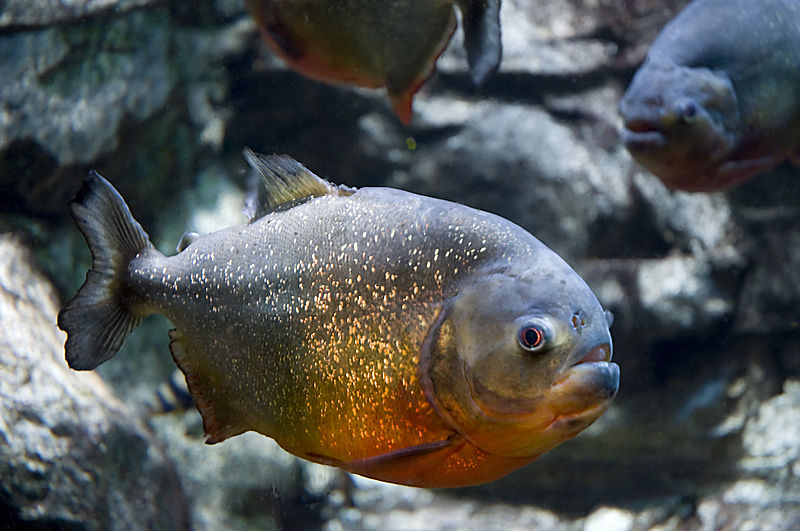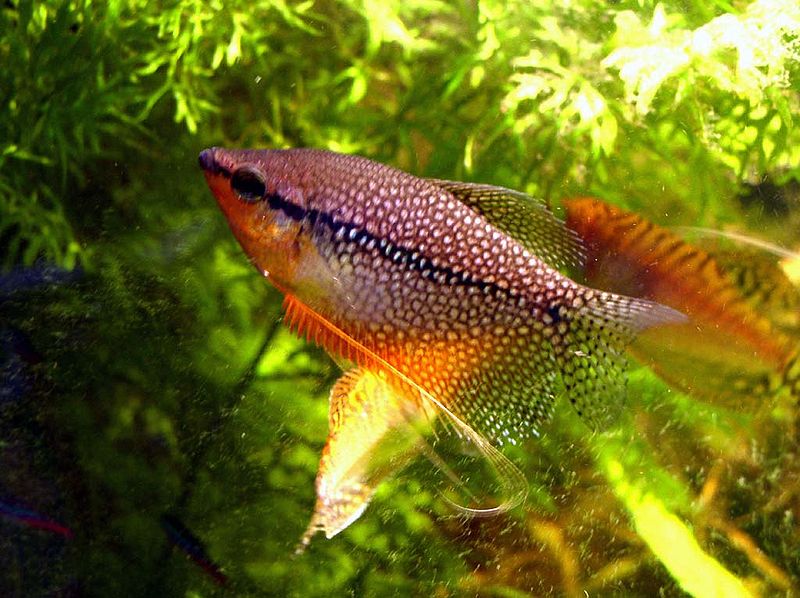 It is a calm day on the Amazon River. Two men are fishing in their small wooden boat. As one casts his line, he slips and falls into the water. Instantly, the surface of the water begins to roil and boil with action as a school of flesh-eating piranhas begins to do their nastiest work on the unfortunate fisherman. Minutes later, there is nothing left as the piranhas have eaten their fill. That is the myth. Aggressive and voracious schools of shiny silver and red fish with razor sharp teeth ready to devour anything that touches the water. So how true is that myth? We’ll be talking about the common Red-belly today, and some more commonly seen piranha in my next blogs. Read More »
It is a calm day on the Amazon River. Two men are fishing in their small wooden boat. As one casts his line, he slips and falls into the water. Instantly, the surface of the water begins to roil and boil with action as a school of flesh-eating piranhas begins to do their nastiest work on the unfortunate fisherman. Minutes later, there is nothing left as the piranhas have eaten their fill. That is the myth. Aggressive and voracious schools of shiny silver and red fish with razor sharp teeth ready to devour anything that touches the water. So how true is that myth? We’ll be talking about the common Red-belly today, and some more commonly seen piranha in my next blogs. Read More »
Category Archives: Freshwater Aquariums
Feed SubscriptionThe Ruby Green Haplochromis – a Victorian Gem
Hey folks, I wanted to do a real quick entry about a beautiful Lake Victorian cichlid called the Ruby Green (Haplochromis sp. “Ruby Green”). I kept my first pair of Ruby Greens when they first appeared in the hobby, I’m always on the lookout for species that aren’t “mainstream” or kept by a lot of hobbyists. These beauties fit the bill, and with their natural habitat dwindling, it’s a matter of conservation. Serious hobbists play a role in prolonging these and many other species by captive breeding and keeping lines pure. Read More »
The Big Picture – Aquarium Giants
Within the aquarium hobby there are many niches. There are reef geeks and coral collectors, catfish aficionados and people that think that guppies are the best thing ever. There are also those in the hobby that will give anything, and pay any price, to keep the biggest and baddest fish possible. Everyone loves an impressive fish that screams “Look at me!” But how realistic is it for the casual aquarist to keep a big fish? Well, that depends on the fish really. Let’s take a look at some of the more commonly kept aquarium giants. Read More »
Phosphates – Invisible Troublemakers in Ponds and Aquariums
Green water. Nuisance algaes. Cyanobacteria. Poor coral growth. Random invertebrate death. All of these are problems found in freshwater aquarium, ponds and saltwater aquariums and leave many aquarists stumped. Most of them can be diagnosed with one simple water test however – the often-overlooked Phosphate test.
What is a Phosphate and Why Should I Be Concerned?
Phosphate is a naturally occurring compound with several sources in aquariums and ponds. The most common may be the source water used. Some municipalities and well water sources naturally contain phosphates. It can come from the soil in the area or from run-off into the water sources, especially in agricultural areas or areas that use a lot of fertilizer (phosphate is one of the main ingredients in fertilizers used on farms and backyards alike). While the levels may not be considered dangerous or high to humans, it can accumulate in aquariums. Phosphates can also enter an aquarium through the salt mixes used in saltwater aquariums, in the rocks and decorations used, and in the thawed water from commercial frozen foods. Read More »
The Pearl Gourami – A Classic Aquarium Fish
 Everyone has that one fish that started it all for them. Most aquarists can remember that one species of fish that got them hooked into this hobby. Maybe it was an Oscar that would beg for food like a dog, a pair of black convicts that would spawn like rabbits every few weeks, or maybe those beautiful fancy tailed guppies got you interested in keeping fish. For me, it was the Pearl Gourami. I can still recall seeing that first adult trio of Pearl Gouramis in a fully planted aquarium. I was amazed at how the male almost glowed when he was around the two females. Read More »
Everyone has that one fish that started it all for them. Most aquarists can remember that one species of fish that got them hooked into this hobby. Maybe it was an Oscar that would beg for food like a dog, a pair of black convicts that would spawn like rabbits every few weeks, or maybe those beautiful fancy tailed guppies got you interested in keeping fish. For me, it was the Pearl Gourami. I can still recall seeing that first adult trio of Pearl Gouramis in a fully planted aquarium. I was amazed at how the male almost glowed when he was around the two females. Read More »
 That Fish Blog – Aquarium Advice and Information
That Fish Blog – Aquarium Advice and Information
